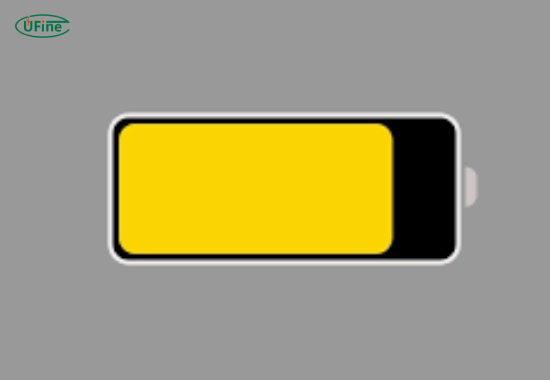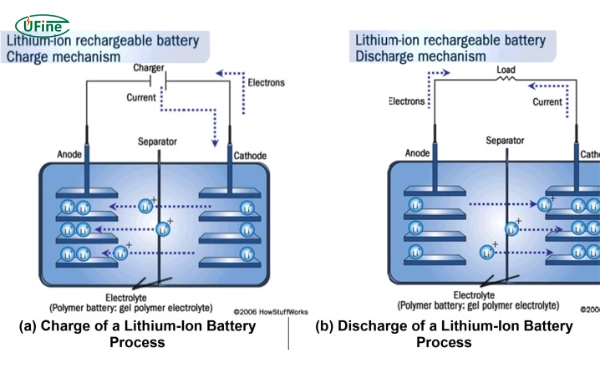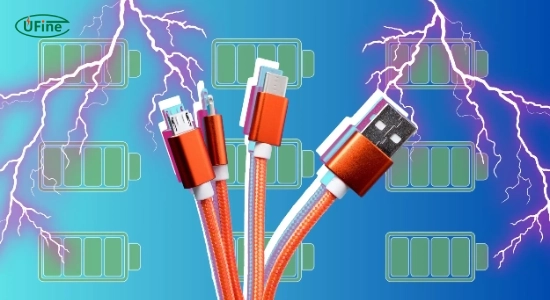
- Part 1. What is low power mode?
- Part 2. Understanding lithium-ion batteries and their charging mechanism
- Part 3. Does low power mode affect charging speed?
- Part 4. Key factors that affect charging speed of lithium batteries
- Part 5. Debunking myths about low power mode and charging
- Part 6. Best practices for charging lithium-ion batteries
- Part 7. Conclusion
- Part 8. FAQs
Does low power mode charge slower for lithium batteries? Lithium-ion batteries power many of our daily devices, from smartphones and laptops to electric vehicles and wearables. As technology advances, the demand for longer-lasting batteries grows. Low Power Mode (LPM) is designed to extend battery life, but how does it affect charging speed? This article explores whether Low Power Mode slows down lithium battery charging, its overall impact, and tips for optimizing your device’s charging efficiency.
Part 1. What is low power mode?
Low Power Mode is a feature on many devices designed to help users extend their battery life by reducing energy consumption. When enabled, LPM restricts background activities and reduces certain power-intensive functions. Here are some common adjustments made when LPM is turned on:
- Dimmed Screen Brightness: Reduces the brightness of the display to save energy.
- Disabled Background App Refresh: Prevents apps from updating in the background, conserving power.
- Reduced Animations and Visual Effects: Minimizes graphic-intensive animations and transitions to save battery.
- Limitations on Connectivity: Features like Bluetooth and Wi-Fi may be partially disabled or restricted to save power.
These changes allow users to use their devices longer without worrying about battery drain. But how does this feature affect the charging speed?
Part 2. Understanding lithium-ion batteries and their charging mechanism
Lithium-ion batteries are widely used because of their high energy density and long cycle life. These batteries charge and discharge through a process involving the movement of lithium ions between two electrodes (anode and cathode). As a device charges, the lithium ions move from the positive electrode (cathode) to the negative electrode (anode), storing energy. When discharging, the ions flow back to the cathode, releasing stored energy to power the device.
Modern lithium batteries include a Battery Management System (BMS) that ensures the battery operates efficiently. The BMS monitors the battery’s voltage, current, and temperature, preventing overheating and overcharging, which can prolong battery life.
Part 3. Does low power mode affect charging speed?
The relationship between Low Power Mode and charging speed is a common concern among users. LPM might slow down charging speeds by reducing processing power. However, the effect of Low Power Mode on charging speed depends on several factors, and in many cases, it can speed up charging.
Power Allocation and Charging Prioritization
When Low Power Mode is activated, the device re-prioritizes power usage. More power is directed toward charging the battery rather than distributing energy to processes like background apps, notifications, or intensive visual effects. This reallocation could result in faster charging times since the device is not using as much power for non-essential functions.
Potential for Faster Charging
Some studies and user experiences indicate that devices in Low-Power Mode may charge slightly faster. For example, many smartphones and tablets with fast-charging capabilities show improved charging speeds when in Low-Power Mode. However, this effect can vary based on the device’s design, charging technology, and overall power draw.
Fast Charging vs Slow Charging: Which is Better for your Lithium Battery?
Part 4. Key factors that affect charging speed of lithium batteries
Several external factors play a role in determining how fast a lithium-ion battery charges. Here’s an overview of the key elements that influence charging times:
Charger Wattage:
One of the most significant factors determining charging speed is the charger’s wattage. Higher-wattage chargers, such as those capable of providing 20W or 30W, charge devices much faster than lower-wattage ones. If your device supports fast charging, using a charger with appropriate wattage can drastically reduce charging time.
Cable Quality:
Not all charging cables are created equal. High-quality cables with thicker, durable wires allow for better power transfer. In contrast, cheaper cables with thinner wires may limit the power delivered to the device, slowing down charging speeds.
Battery Age and Condition:
As lithium-ion batteries age, their capacity to hold a charge diminishes, resulting in slower charging speeds. A new battery typically charges faster and more efficiently than an older, degraded one.
Temperature:
Charging efficiency can also be influenced by temperature. Lithium batteries perform best when charged at temperatures between 20–25°C. Charging in extreme cold or heat can lead to slower charging times or cause the device to stop charging altogether.
Part 5. Debunking myths about low power mode and charging
There are several myths surrounding Low Power Mode and its impact on charging. Let’s address them to clarify the facts:
Myth 1: Low Power Mode Slows Down Charging
- Fact: While LPM does reduce the device’s power usage for non-essential tasks, it does not inherently slow down charging. Conserving energy can help charge your device faster.
Myth 2: All Devices Respond the Same to Low Power Mode
- Fact: Not all devices behave the same way when Low Power Mode is enabled. Different devices, operating systems, and hardware configurations can impact how the battery charges in LPM.
Myth 3: You Should Always Use Low Power Mode While Charging
- Fact: While LPM can be helpful, using a quality charger and cable often provides better charging speeds without activating LPM.
Part 6. Best practices for charging lithium-ion batteries
To maximize the efficiency and lifespan of your lithium-ion battery, consider the following best practices:
- Use High-Wattage Chargers: Always use chargers that match your device’s fast charging specifications to reduce charging time.
- Invest in Quality Cables: Choose high-quality, durable cables for optimal power transfer.
- Avoid Using the Device While Charging: If possible, refrain from using your device for heavy tasks like gaming or video streaming while charging, as this can draw power away from the charging process.
- Keep Your Device Cool: Ensure your device has proper ventilation while charging. Excess heat can reduce charging efficiency and damage the battery over time.
Part 7. Conclusion
Low Power Mode can be a powerful tool for extending your battery life, but it also has the potential to improve charging efficiency in specific scenarios. While LPM does not inherently slow down charging, it can help by reallocating power to the battery rather than non-essential tasks. You can maximize your lithium-ion battery’s performance by understanding how Low Power Mode works and optimizing your charging habits.
Explore Ufine Battery’s high-performance solutions for various devices to enhance your charging experience further. Ready to optimize your battery life? Visit our website for more information and tips on improving charging efficiency.
Part 8. FAQs
-
Does Low Power Mode help my device charge faster?
Yes, activating Low Power Mode may help your device charge slightly faster by reducing energy consumption from background tasks. -
Is it safe to use my device while charging in Low Power Mode?
It’s safe but may draw additional power and slow the charging process. -
Does Low Power Mode affect my lithium-ion battery health?
No, using Low Power Mode will not harm your battery’s health. It can extend battery life by conserving energy when needed. -
Can I receive notifications in Low Power Mode?
Yes, you can still receive notifications. However, some features, like background app refresh, may be limited while LPM is enabled.
Related Tags:
More Articles

Battery Load Test: A Comprehensive Guide
Step-by-step battery load test guide for car, solar & industrial use. Learn how to load test a battery, interpret voltage charts, and avoid common mistakes.
The Comprehensive Guide to Battery Balancing and Battery Balancer
Discover how battery balancers improve lithium battery performance, lifespan, and safety. Learn types, functions, and tips to choose the right balancer.
What Is the Best Voltage for a Chainsaw Battery?
Compare 12V-80V chainsaw batteries for light pruning, medium firewood, and professional cutting. See best battery chainsaw with runtime charts and safety tips.
Lithium VS. Alkaline Batteries: A Comprehensive Comparison
Lithium batteries last 3–7× longer than alkaline and perform better in cold weather. Compare lifespan, cost, safety, and best uses to choose the right battery.
Comparing Lithium-Sulfur and Lithium-Ion Batteries: Which is Right for You?
Compare lithium-sulfur (Li-S) and lithium-ion batteries on energy, lifespan, cost, safety, and applications. Best choice for drones, EVs, and electronics.






